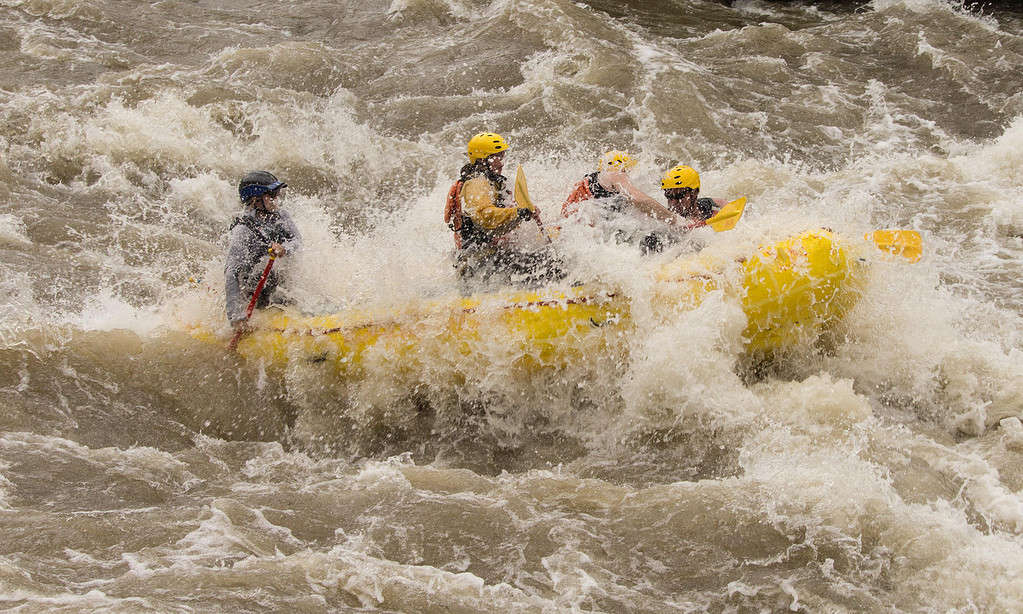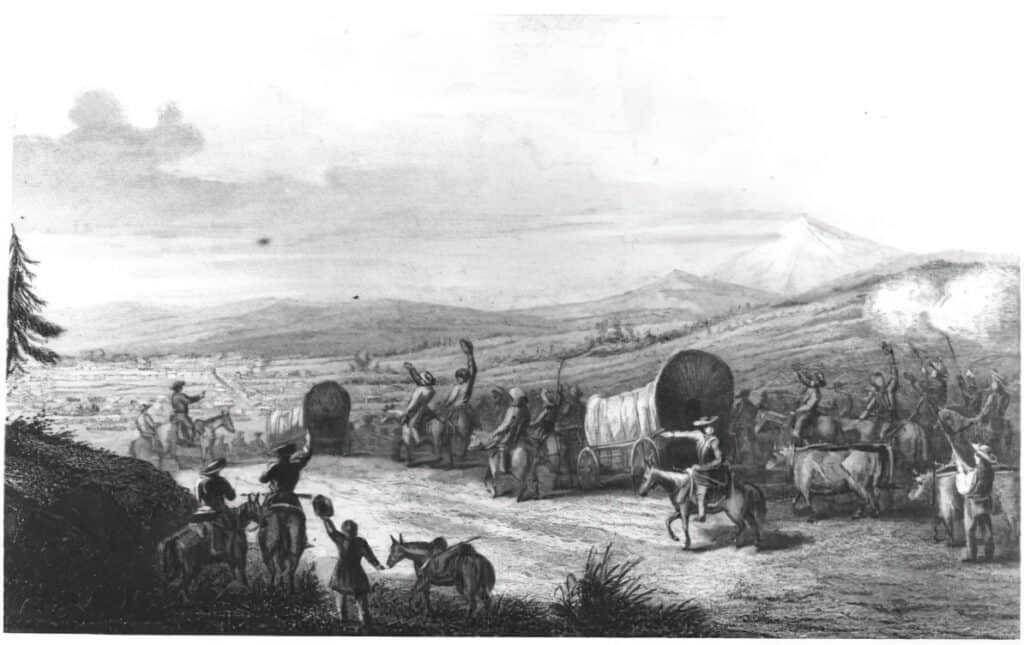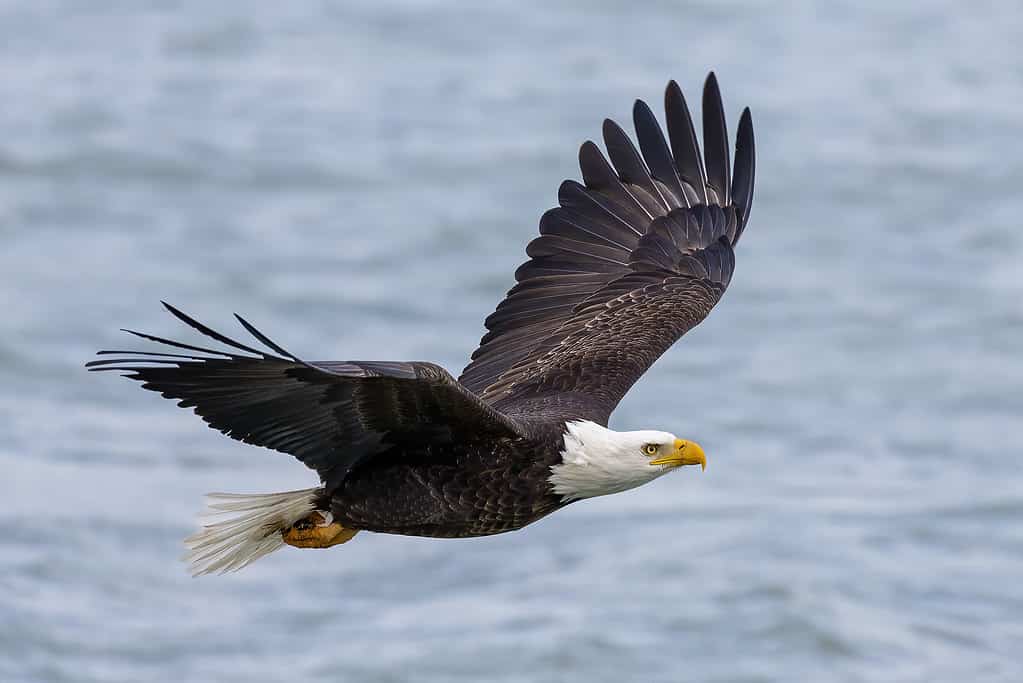The Arkansas River is one of the largest tributaries of the massive Mississippi River. But just how long is this mighty river? From the beginning to the point where it joins the Mississippi, the Arkansas River is 1,460 miles. It is the sixth-longest river in the United States with a big portion of its length stretching across Colorado. The river also passes through Colorado, Kansas, Oklahoma, and Arkansas.
Where Does the Arkansas River Begin?
This river begins in the appropriately named Arkansas River Valley in Colorado. Much of the water that forms the river comes from snow melting and other precipitation in the Rocky Mountains. Around 25,000 square miles of land drain into the Arkansas River where it begins. The origin of the river is quite steep and goes through mountainous regions. It is known for its sections of exciting and extreme whitewater rafting. As it descends out of the Rockies, the river gets calmer and wider.
One of the amazing things about the Arkansas River Valley is that it is the result of the shifting of tectonic plates around 20 million years ago. Most river valleys form over time as the water erodes the land and rocks away, leaving a valley behind. In this case, however, the Rio Grande Rift resulted in the Arkansas River Valley as well as other geological features in the region.
It generally flows east and southeast as it goes from Colorado in the west all the way to Arkansas and the Mississippi River. The river flows for around 300 miles in Colorado alone, going from an elevation of over 12,000 feet to just 3,350. The rest of the river has a much less dramatic elevation change and is generally calmer and quieter.
The river merges with the Mississippi River in southeastern Arkansas. Both the state and the river were named after a Native American tribe that lived in the area.

Whitewater rafting is a popular activity on sections of the Arkansas River.
©Rich Flubacker/Shutterstock.com
History of the Arkansas River
This river was important to many Native American tribes that lived, hunted, and explored along its banks. As a long river, there were many tribes that used the river’s resources over the years. It was first marked on a map in the late 1600s as “St. Peter’s and St. Paul’s River.” In other places, it is called the Napete or the Arkansa. It was the last name that stuck and became the name of Arkansas that we use today.
The Arkansas River marked the border between the United States and Mexico all the way up until 1846 after Texas was annexed by the U.S. and the Mexican-American War broke out. It later became part of the United States and now runs across four states.
The Santa Fe Trail, which settlers followed from Missouri to New Mexico as they searched for new opportunities, also went along the Arkansas River through Kansas. It never became the hub of commercial maritime traffic that the Mississippi or Missouri Rivers were but does have some boat traffic at various points.

Segments of the Santa Fe National Historic Trail run through Oklahoma and four other states.
©Unknown author / public domain – Original
Can Ships Go on the Arkansas River?
Yes, ships can travel on the Arkansas River, although it does pose some challenges for large vessels. There are dams and locks that artificially deepen the river so that larger ships and boats can safely navigate the river.
Smaller boats, such as fishing boats, kayaks, and other recreational boats are common on the Arkansas River. Whitewater rafting is also very popular, especially in the Colorado sections of the river. There are numerous commercial tourist companies that provide amazing opportunities to whitewater raft.
Can You Fish in the Arkansas River?
This river is ideal for fishing, especially if you want to catch trout. Large sections of the river are shallow enough to wade as you are fishing. There are also a lot of accessible spots that do not require special access. Major portions of the river are publically accessible. All you need to do is get the appropriate state’s fishing permit and the right gear. Fortunately, there are also plenty of places to get advice, rent gear, or even arrange a guide for some excellent fishing.

Rainbow trout are one of many species of fish in the Arkansas River.
©Henrik A. Jonsson/Shutterstock.com
How Deep is the Arkansas River?
The depth of the river varies greatly throughout its long length. The upper section is characterized by steep elevation changes rather than depth. The middle section is much tamer and deeper, although there are still places where the river is very shallow.
Animals in the Arkansas River
The Arkansas River is home to many of the same wildlife as other rivers in the United States, including fish, birds, and some marine mammals. Bald eagles, hawks, osprey, and other birds of prey are often seen flying over its water looking for food. Brown trout and rainbow trout are the two most plentiful fish that anglers try to catch.
On the banks, animals like beaver, deer, raccoons, and other animals are very common. Frogs and other amphibians can be found making their homes in the shallower pools and muddy banks. There are sections of the river where bighorn sheep live. In fact, Bighorn Sheep Canyon in Colorado is one of the most breathtaking parts of the Arkansas River. Not only is it home to some spectacular whitewater rafting, but you’ll also likely see one of these surefooted animals on the rocky cliffs overlooking the river.

Bald eagles are typically found near bodies of water.
©iStock.com/Karel Bock
The photo featured at the top of this post is © Hundley_Photography/ via Getty Images
Thank you for reading! Have some feedback for us? Contact the AZ Animals editorial team.







